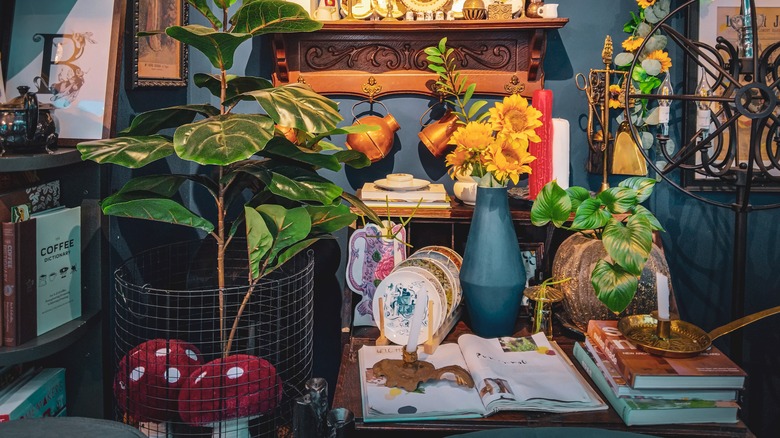Can't Declutter? An Intentional Design Trend Is For You
There is no shame in admitting you are not a minimalist. While trends seem to lean toward the less-is-more mindset in many circles, there is an argument for homes that feel lived in and well-loved. Intentional clutter, the love child of maximalism decor and the cluttercore trend has become the go-to for people who don't want to get rid of meaningful items, decor, and even furniture. This trend allows you to enjoy your space no matter how many surfaces are covered in knickknacks. While this aesthetic is a great way to hold onto those things that matter to you and display them with pride, there's still a method to the madness that keeps your home on the chic side of chaos: the intentional clutter trend. This doesn't require you to de-clutter, but decorate with intention and avoid the dreaded hoarder label.
The first and most important step toward embracing and nailing the intentional clutter trend is to pick special or meaningful items. This helps to stop you from displaying things that you just found, which can be a slippery slope if you like to shop (or especially thrift). By choosing items that hold sentimental value or a purpose, you're already elevating the space with something that gives you joy. This will help you sift through pieces that might have to go to make room for more purposeful items. Again, with intentional clutter, it's not about getting rid of things simply to make space. You just want all of your items to flow and feel meaningful, which separates cluttercore and intentional clutter from maximalist decor.
Choose meaningful items, and display with intention
Lived-in areas are where your maximalist vibes can thrive. Keep ornaments and items you love where you can see them when you're hanging out on the couch or recliner, and decorate your dresser and bedside tables with favorite books, accessories, photos, candles, and treasures to enjoy them whenever you're relaxing. Items that fill your cup will also bring you peace, but if you're holding onto a trinket simply because someone gifted it and you feel guilty, this leads to unnecessary clutter and could veer into chaos territory.
A second tip for intentional clutter is ensuring each item has a home, be it a table, shelf, cabinet, or any other surface on which it can be displayed. You want your intentional clutter to feel organized, not stacked or piled up, so things don't get lost in the fray. For example, if you have collectible toys that go together, you can group them on a shelf to display them, which brings uniformity and ensures that different items aren't randomly strewn throughout a room.
The last thing to remember is that you don't need to embrace intentional clutter decor in every area of your abode. While areas that you spend a lot of time in and around (think living rooms, bedrooms, dining areas) can work with this design trend, it's ideal and practical to keep certain rooms, like your kitchen or, more specifically, your cabinets and pantry, organized and a little less busy. You can still fill these with needed items, but make sure you have a system to find everything within these spaces. This reduces stress and mess when trying to cook, clean, and function within a room that requires more flow.
